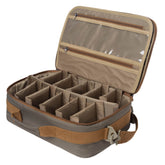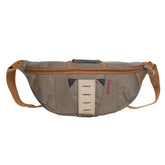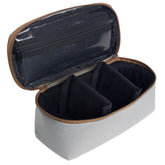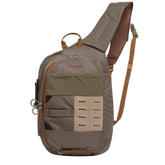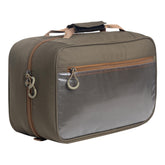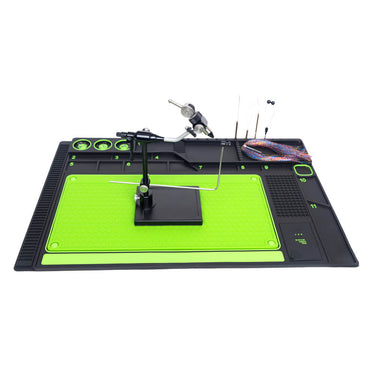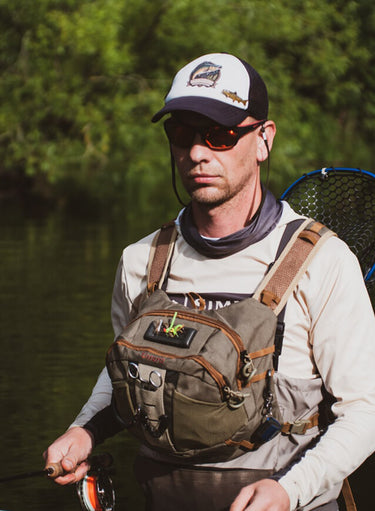Fly Fishing Leader: Choosing the Best Fly Fishing Line for Success
Choosing the right fly fishing leader is crucial for success on the water. A good leader allows for precise casting and better presentation of your fly, which can significantly improve your chances of attracting fish. The best fly fishing leader depends on the type of fishing conditions and the species targeted, as different weights and tapers serve different purposes.

When selecting a fly fishing line, it's essential to consider the weight and taper that match your rod and the type of flies you'll be using. A well-balanced setup ensures that your casts are smooth and accurate. The leader line plays a key role in this setup, connecting the fly line to the tippet, making your presentation more natural underwater.
In this article, I will discuss how to choose the best fly fishing leader for your needs, covering everything from lengths and diameters to the importance of tippet selection. By understanding these elements, you can enhance your fly fishing experience and increase your success rate on the water.
Fundamentals of Fly Fishing Lines
Fly fishing lines are essential components that affect casting, presentation, and overall success on the water. Understanding the nuances of line weight, taper, and buoyancy options will enhance my fishing experience.
Understanding Line Weight and Taper
Line weight plays a crucial role in fly fishing. Weight is denoted by a number, typically ranging from 1 to 14, which indicates the line's mass. A lighter line is suitable for small fish, while a heavier line is required for larger species.
Taper refers to the thickness and design of the line. A few common types include:
- Weight Forward (WF): Ideal for casting longer distances.
- Double Taper (DT): Provides versatility and is great for delicate presentations.
Choosing the right combination of weight and taper improves accuracy and control, making it easier for me to manage different fishing conditions.
Differentiating Sinking and Floating Lines
Fly lines can be either floating or sinking, each serving distinct purposes.
Floating Lines are the most common and allow me to fish with dry flies effectively. Their buoyancy enables the fly to stay on the surface, mimicking natural insects.
Sinking Lines, on the other hand, have different densities, allowing me to reach deeper waters. They come in various types:
- Intermediate: Sinks slowly to depths of 0 to 6 inches.
- Sink Tip: Has a sinking front but a floating back, blending both techniques.
- Full Sink: Sinks rapidly, excellent for deep water fishing.
Selecting the appropriate line type based on the environment and species targeted influences my success rate significantly.
Optimizing Leader and Tippet Performance
To improve my success in fly fishing, I focus on the leader and tippet's performance. Key factors include the choice of leader length and material, tippet efficiency, and advancements in tapered leaders.
Choosing the Right Leader Length and Material
Selecting the appropriate leader length significantly impacts casting and presentation. I typically choose a leader length between 7.5 to 12 feet, depending on the fishing environment.
- Long Leaders are ideal for delicate presentations, particularly in clear waters.
- Shorter Leaders offer better control in windy conditions or when casting heavier flies.
Materials also play a crucial role. I prefer fluorocarbon leaders for their abrasion resistance and low visibility under water. This allows for a discreet presentation that doesn’t spook fish. Monofilament leaders, while less invisible, offer better knot strength and flexibility, making them suitable for various fishing situations.
Maximizing Tippet Efficiency
Tippet efficiency is key to ensuring effective energy transfer and smooth turnover of the fly. I choose tippet material based on its diameter and strength. Fluorocarbon tippets provide excellent abrasion resistance and sensitivity, making them my go-to for challenging fishing conditions.
I typically use a tippet diameter that matches the size of the fly to ensure optimal presentation. Using a heavier tippet than necessary may hinder the fly's movement, while a lighter tippet risks breakage. Ensuring the correct balance enhances knot strength and overall performance.
Advancements in Tapered Leaders
Recent advancements in tapered leaders have improved fly presentation in various situations. I appreciate how modern tapered leaders feature more refined tapers, enabling a smoother turnover. This extends the life of my leader while maximizing casting distance.
These leaders often incorporate a combination of materials, such as fluorocarbon for the tip and monofilament for the butt section. This blend provides both versatility and enhance abrasion resistance. With the right combination of technology and material, I experience improved cast control and more successful fishing outings.
Essential Knots and Connections
Understanding the right knots and connections is crucial for effective fly fishing. Proper knotting techniques and reliable connections enhance your tackle's performance and ensure a successful outing.
Mastering the Nail Knot and Perfection Loop
The Nail Knot is my go-to for securing the fly line to the backing or tying on a leader. To tie this knot, I wrap the leader around the fly line and secure it with a few turns, then pass the end back through a small loop created. This knot lies flat against the line, reducing drag when casting.
The Perfection Loop is another essential knot, used for creating a strong loop connection at the end of a leader or tippet. This knot is tied by forming a loop, wrapping the end around the standing line, and passing it back through the loop. It results in a strong, fixed loop that can be used to attach flies or swivel clips.
Utilizing Tippet Rings and Welded Loops
Tippet rings provide a convenient connection point for attaching tippet material to a leader. When using a tippet ring, I can quickly change tippet sizes without cutting my leader. This helps maintain the integrity of my leader's strength while allowing for versatility in different fishing conditions.
Welded loops offer a knotless approach to joining lines. Found on many factory-made leaders, these loops allow for quick and reliable connections. I can easily attach the fly line
or tippet, ensuring a streamlined setup that minimizes tangles. The welded connection enhances the overall strength of my leader system, making it a favorite for many anglers.
Strategies for Specific Fishing Conditions

Adapting my approach to various fishing conditions enhances my chances of success. Specific tactics are crucial for targeting fish effectively, particularly when navigating different environments or selecting the right gear.
Navigating Small Streams and Large Rivers
When fishing small streams, I prioritize stealth and accuracy. The lighter my gear, the less likely I am to spook trout. I often use a Rio Powerflex Trout Leader due to its sensitivity, which is essential for detecting strikes. I opt for longer leaders, around 9 to 12 feet, to ensure my flies present naturally in pressured waters.
In larger rivers, I adjust my strategy to accommodate the increased current. Here, I frequently switch to Rio Steelhead Leaders, which offer better turnover for larger flies and heavier currents. I focus on using weighted nymphs or streamers, ensuring they reach the right depth without dragging unnaturally.
Tailoring Leaders for Dry Fly Fishing and Nymphing
For dry fly fishing, I find that a delicate leader is paramount. Often, I choose leaders that are tapered and around 9 feet long, utilizing Rio Suppleflex for its suppleness. This material helps my dry flies land softly on the surface, enticing trout without alerting them.
In contrast, with nymphing, especially using the Euro nymphing technique, I prefer shorter, stiffer leaders. This configuration provides better sensitivity for detecting subtle takes. I usually aim for leaders around 5 to 7 feet, ensuring that the nymphs drift effectively in the desired depth. The right leader makes a significant difference when targeting species like steelhead.



